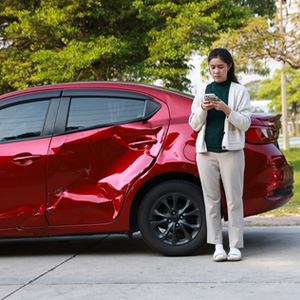Call Now To Learn More About Your Legal Rights
(479) 750-2334(Calls Answered 24/7) OR Text Us:
(479) 358-1998
One of the biggest, most important changes is that now you’ve got multiple insurance companies to deal with, depending on what the Rideshare driver’s status was at the time.
There are more insurance companies involved, which means more parties that may have to preserve evidence of logs or videos. An attorney will know how to preserve that evidence, where to look for it, and who’s responsible for keeping it.
Also, providing notice of all the insurance carriers is extremely important. If you don’t provide notice of all the insurance carriers, you could risk getting denied by one, because another one was supposed to cover a particular phase of the process the driver was in.
A driver’s app activity status determines who’s responsible for paying for an injured person’s claim. If the driver is on the app and actively completing a ride, a different insurance will apply than if the driver was just waiting for a ride and didn’t have anybody in the car or hadn’t even signed into the app yet.
There’s a variety of insurance policies that may cover, depending on the driver’s status. If the driver was simply driving around as a normal person and not actively performing work for their rideshare service, different insurance coverage would apply. As your attorney, it’s our job to figure out which insurance company is responsible for coverage.
I think certain insurance companies will feel entitled to preserving different forms of evidence that they may be responsible for or can easily access, where the other insurance companies might not have the same access.
Obviously, insurance companies will have access to their unique insurance information, but opposing insurance companies and the plaintiff won’t have access to preserving anything on the driver’s or rideshare company’s behalf.
So, with these different insurance companies involved, everyone’s preserving a different piece of the puzzle that can be used in litigation down the road. Everyone’s responsible for preserving pieces of the accident. Your attorney has to make sure that there’s a request is sent to preserve that information.
Two things come to mind right off the bat, the first of which is that rideshare drivers will often have in-car recording systems like dash-cams that record the happenings of the vehicle. Oftentimes, this is to protect the driver and passengers from any violence or abuse. It’s just a good thing to have. This footage can also be used as evidence to show that a driver may have been distracted. We can get that in a Rideshare driver case.
Another important piece of evidence is simply the testimony of the people the rideshare driver was transporting. These people are extra witnesses to the collision. If a rideshare driver hits one of our clients, or if you’re in a rideshare driver’s vehicle, and there are other passengers, that’s just another avenue to get evidence to use to talk about how the crash happened.
I don’t know if we have a specific example, but going back to what we’ve been kind of talking about over and over again when we sign up for a rideshare case, the first thing we do is notify any insurance company that may pay, even the ones we think may not be responsible.
For example, if the driver had personal insurance, but was online on the app in an active ride, their personal insurance is almost always excluded. Their personal insurance does not cover using a car for business purposes. However, we still notify them about the case.
Coordination of the different insurance companies is probably the most helpful thing that an Arkansas car accident attorney can do in a rideshare driver case.
For more information on Rideshare Accident Lawyer Arkansas, an initial consultation is your next best step. Get the information and legal answers you are seeking by calling (479) 750-2334 today.